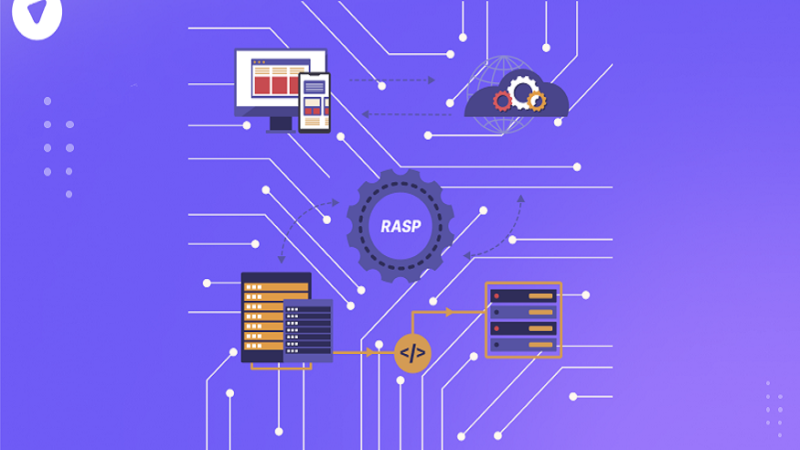How SD-Branch is Revolutionising Network Management Across Distributed Locations

As organisations rapidly expand their geographical footprint, managing complex network infrastructure across multiple branch locations has become a daunting challenge. Traditional networking approaches, with their siloed management and rigid architectures, are no longer sufficient to meet the demands of the modern distributed enterprise. Enter SD-Branch, a groundbreaking solution that leverages SD-WAN technology to simplify and streamline network management across diverse locations.
In this article, we will explore how SD-Branch is transforming the way organisations manage their distributed networks, delivering unparalleled operational efficiency, enhanced security, and seamless scalability. We will delve into the core components of SD-Branch architecture, examine real-world use cases, and highlight the tangible benefits that businesses can realise by embracing this innovative approach.
The Challenges of Managing Distributed Networks
Managing networks across multiple branch locations presents several significant challenges. IT teams must contend with disparate network devices, inconsistent configurations, and the complexities of maintaining security and performance across diverse environments. Traditional networking models, built around isolated solutions for each network layer, lead to operational inefficiencies, increased costs, and a lack of centralised visibility and control.
Moreover, as organisations embrace digital transformation and cloud-first strategies, the demands on branch networks have escalated. Bandwidth-intensive applications, remote workforces, and the need for seamless connectivity to cloud resources have exposed the limitations of legacy network architectures. IT teams find themselves struggling to keep pace with the evolving requirements of the modern enterprise while grappling with the complexity and rigidity of traditional networking approaches.
The Power of SD-Branch: Simplifying Network Management
SD-Branch represents a paradigm shift in network management, offering a unified and software-defined approach to managing distributed networks. By integrating SD-WAN, routing, firewalls, security, and LAN/Wi-Fi functions into a single platform, SD-Branch eliminates the complexity and inefficiencies associated with managing disparate network components.
At the core of SD-Branch lies SD-WAN technology, which enables intelligent traffic routing, network optimisation, and centralised management across wide area networks. SD-WAN allows organisations to leverage multiple connection types, including broadband internet, MPLS, and cellular links, to create resilient and cost-effective branch connectivity.
| SD-Branch Component | Key Benefit |
| SD-WAN | Intelligent traffic routing and network optimisation |
| Integrated Security | Unified threat protection and policy enforcement |
| Zero-Touch Provisioning | Rapid branch deployment and simplified management |
| Centralised Management | Single-pane-of-glass visibility and control |
By consolidating these critical networking functions into a unified platform, SD-Branch simplifies operations, reduces costs, and enhances agility. IT teams can manage all network elements through a single, centralised console, eliminating the need for multiple management tools and reducing the learning curve for administrators.
Enhancing Security Posture with Integrated Protection
Security is a paramount concern for distributed enterprises, as branch networks often represent potential entry points for cyber threats. Traditional security approaches, with separate devices and policies for each network layer, can lead to gaps in protection and increased management complexity.
SD-Branch addresses these challenges by incorporating comprehensive security features directly into the platform. With integrated firewalls, intrusion prevention systems (IPS), and advanced threat protection, SD-Branch ensures consistent and robust security across all branch locations.
Key security benefits of SD-Branch include:
- Unified threat protection:Centralised security policies are enforced consistently across all branches, eliminating security gaps and ensuring a strong security posture.
- Simplified compliance: Integrated security features help organisations meet regulatory requirements and industry standards, such as PCI-DSS and HIPAA.
- Zero-trust frameworks: SD-Branch enables the implementation of zero-trust security models, granting access based on user identity and device posture.
By embedding security directly into the network fabric, SD-Branch simplifies security management, reduces the attack surface, and enables organisations to protect their distributed assets effectively.
Rapid Deployment and Scalability With Zero-Touch Provisioning
One of the most significant advantages of SD-Branch is its ability to streamline branch deployments and enable rapid scalability. Traditional branch network setups often involve time-consuming manual configurations, on-site technician visits, and lengthy provisioning processes.
With SD-Branch, organisations can leverage zero-touch provisioning capabilities to automate the deployment process. Pre-configured devices can be shipped directly to branch locations, where they automatically connect to the network and receive their configuration from the central management console. This eliminates the need for skilled IT personnel to be present at each site, reducing deployment time from weeks to mere hours.
Moreover, SD-Branch enables organisations to scale their networks quickly and efficiently. As new branches are added or existing locations expand, SD-Branch allows for seamless integration and centralised management of the entire network infrastructure. This agility is crucial for businesses undergoing rapid growth or experiencing dynamic changes in their operational requirements.
Real-World Impact: SD-Branch in Action
The benefits of SD-Branch extend beyond theoretical discussions—they have been demonstrated in real-world scenarios across various industries. Let’s explore a few examples of how SD-Branch has transformed network management for distributed enterprises.
Retail: Enhancing Customer Experience and Operational Efficiency
A leading retail chain with hundreds of stores across the country faced challenges in managing its distributed network infrastructure. With SD-Branch, the retailer was able to:
- Accelerate new store rollouts by leveraging zero-touch provisioning
- Ensure consistent network performance and reliability across all locations
- Centralise management of point-of-sale systems, inventory management, and surveillance
- Enhance in-store customer experiences through seamless Wi-Fi connectivity and personalised offerings
Manufacturing: Enabling Industry 4.0 and IoT Connectivity
A global manufacturing company with multiple production sites and warehouses required a robust and scalable network infrastructure to support its Industry 4.0 initiatives. By implementing SD-Branch, the manufacturer achieved:
- Seamless connectivity for IoT devices and sensors across the production floor
- Reliable and secure remote access for employees and partners
- Centralised visibility and control over the entire network infrastructure
- Improved operational efficiency through real-time data collection and analysis
These real-world examples highlight the transformative impact of SD-Branch on network management across diverse industries. By simplifying operations, enhancing security, and enabling rapid scalability, SD-Branch empowers organisations to focus on their core business objectives while ensuring a reliable and high-performing network infrastructure.
Embracing the Future of Branch Networking
As distributed enterprises continue to evolve and embrace digital transformation, the need for a unified and intelligent approach to network management becomes increasingly critical. SD-Branch represents the future of branch networking, offering a comprehensive solution that addresses the challenges of managing complex, geographically dispersed networks.
By leveraging the power of SD-WAN technology, SD-Branch simplifies operations, enhances security, and enables rapid scalability. Organisations can benefit from centralised management, consistent policy enforcement, and the ability to adapt quickly to changing business requirements.
As you embark on your journey towards modernising your branch network infrastructure, consider the benefits of SD-Branch and how it can transform your organisation’s network management capabilities. With its proven track record of delivering operational efficiency, enhanced security, and seamless scalability, SD-Branch is poised to become the standard for managing distributed networks in the digital era.






